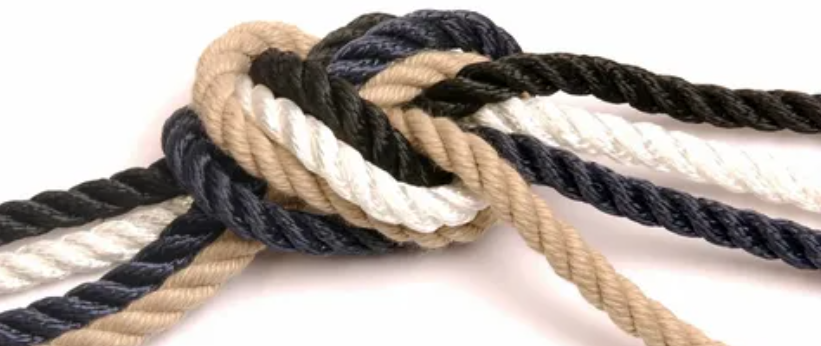
The 3 Types Of Ship Rope main of are manila, nylon, and polypropylene. Each type has its own unique properties and benefits, so it is important to consider the application before choosing the right rope for the job.
Manila rope is a natural fiber rope made from abaca, a type of banana plant. It is strong, durable, and resistant to abrasion, making it a great choice for general use on boats. However, it is not as flexible as nylon or polypropylene, and it may require more maintenance.
Nylon rope is a synthetic fiber rope that is lightweight and flexible. It is resistant to abrasion and can be used in a variety of applications. It is also resistant to UV rays and chemical exposure, making it a great choice for use in marine environments.
Polypropylene rope is a synthetic fiber rope that is strong, flexible, and resistant to abrasion and UV rays. It is also resistant to chemical exposure, making it a great choice for use in marine environments. It is also very lightweight and easy to handle.
When choosing the right rope for your boat, consider the application and the environment in which it will be used. Manila rope is a great choice for general use, while nylon and polypropylene are better suited for marine applications. Ultimately, the best rope for you will depend on your needs and the environment in which it will be used.
What are 3 strands of ship rope?
Three-strand rope is a type of rope that is made up of three individual strands twisted together in a continuous pattern. This type of rope is commonly used in the marine industry and is known for its strength and durability. The three strands are usually made of manila, nylon, or polypropylene, depending on the application. Three-strand rope is often used in rigging and mooring, as well as for anchoring and towing. It is also used in rope ladders, safety lines, and fishing lines.
What is the difference between manila and polypropylene rope?
Manila rope is a natural fiber rope made from abaca, a type of banana plant. It is strong, durable, and resistant to abrasion, making it a great choice for general use on boats. However, it is not as flexible as nylon or polypropylene, and it may require more maintenance.
Polypropylene rope is a synthetic fiber rope that is strong, flexible, and resistant to abrasion and UV rays. It is also resistant to chemical exposure, making it a great choice for use in marine environments. It is also very lightweight and easy to handle.
Overall, the differences between manila and polypropylene rope come down to their individual properties and the application for which they are being used. Manila is great for general use, while polypropylene is better suited for marine applications.
What is the difference between nylon and polypropylene rope?
Nylon rope is a synthetic fiber rope that is lightweight and flexible. It is resistant to abrasion and can be used in a variety of applications. It is also resistant to UV rays and chemical exposure, making it a great choice for use in marine environments.
Polypropylene rope is a synthetic fiber rope that is strong, flexible, and resistant to abrasion and UV rays. It is also resistant to chemical exposure, making it a great choice for use in marine environments. It is also very lightweight and easy to handle.
The main difference between nylon and polypropylene rope is that nylon is more flexible and lightweight, while polypropylene is stronger and more resistant to abrasion and UV rays. Nylon is better suited for applications that require flexibility and lightweight, while polypropylene is better suited for marine applications that require strength and durability.
Overall, the right type of rope for you will depend on your needs and the environment in which it will be used. Consider the application and the environment before choosing the right rope for the job.
How do 3 strands of ship rope work?
Three-strand rope is made up of three individual strands twisted together in a continuous pattern. This type of rope is strong, durable, and resistant to abrasion and UV rays, making it a great choice for use in marine environments. The three strands are usually made of manila, nylon, or polypropylene, depending on the application.
The three strands are twisted together in a manner that creates a strong, uniform rope. The strands are twisted around each other in a clockwise direction, and the resulting rope is known as a right-hand lay. This lay ensures that the strands are evenly distributed, creating a strong and durable rope.
The twisting of the strands also helps to reduce the rope’s overall diameter, making it easier to handle and store. The twisting also helps to reduce the amount of stretch in the rope, making it more reliable and secure.
Three-strand rope is often used in rigging and mooring, as well as for anchoring and towing. It is also used in rope ladders, safety lines, and fishing lines.